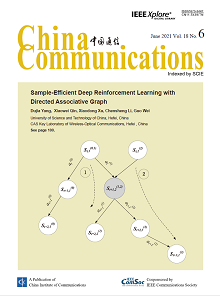FEATURE TOPIC: TIME-CRITICAL COMMUNICATION AND COMPUTATION FOR INTELLIGENT VEHICULAR NETWORKS
Wugedele Bao, Celimuge Wu, Siri Guleng, Jiefang Zhang, Kok-Lim Alvin Yau, Yusheng Ji
2021, 18(6): 39-52.
In order to support advanced vehicular Internet-of-Things (IoT) applications, information exchanges among different vehicles are required to find efficient solutions for catering to different application requirements in complex and dynamic vehicular environments. Federated learning (FL), which is a type of distributed learning technology, has been attracting great interest in recent years as it performs knowledge exchange among different network entities without a violation of user privacy. However, client selection and networking scheme for enabling FL in dynamic vehicular environments, which determines the communication delay between FL clients and the central server that aggregates the models received from the clients, is still under-explored. In this paper, we propose an edge computing-based joint client selection and networking scheme for vehicular IoT. The proposed scheme assigns some vehicles as edge vehicles by employing a distributed approach, and uses the edge vehicles as FL clients to conduct the training of local models, which learns optimal behaviors based on the interaction with environments. The clients also work as forwarder nodes in information sharing among network entities. The client selection takes into account the vehicle velocity, vehicle distribution, and the wireless link connectivity between vehicles using a fuzzy logic algorithm, resulting in an efficient learning and networking architecture. We use computer simulations to evaluate the proposed scheme in terms of the communication overhead and the information covered in learning.
